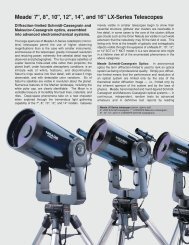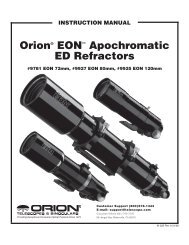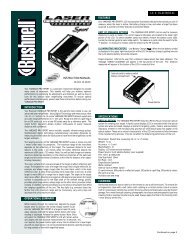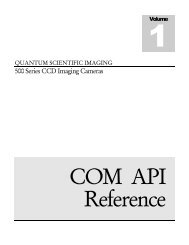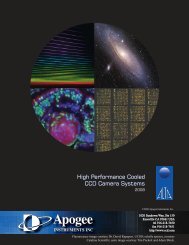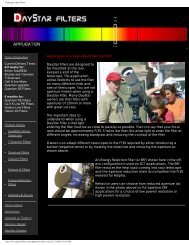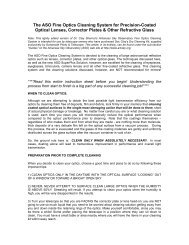INSTRUCTION MANUAL
INSTRUCTION MANUAL
INSTRUCTION MANUAL
Create successful ePaper yourself
Turn your PDF publications into a flip-book with our unique Google optimized e-Paper software.
A telescope is an instrument that collects and focuses light. The nature of the optical design determines how the light is focused.<br />
Some telescopes, known as refractors, use lenses. Other telescopes, known as reflectors, use mirrors. The Schmidt-Cassegrain<br />
optical system (or Schmidt-Cass for short) uses a combination of mirrors and lenses and is referred to as a compound or<br />
catadioptric telescope. This unique design offers large-diameter optics while maintaining very short tube lengths, making them<br />
extremely portable. The Schmidt-Cassegrain system consists of a zero power corrector plate, a spherical primary mirror, and a<br />
secondary mirror. Once light rays enter the optical system, they travel the length of the optical tube three times.<br />
Figure 6-1<br />
A cutaway view of the light path of the Schmidt-Cassegrain optical design<br />
The optics of the NexStar have Starbright coatings - enhanced multi-layer coatings on the primary and secondary<br />
mirrors for increased reflectivity and a fully coated corrector for the finest anti-reflection characteristics.<br />
Inside the optical tube, a black tube extends out from the center hole in the primary mirror. This is the primary baffle<br />
tube and it prevents stray light from passing through to the eyepiece or camera.<br />
Image Orientation<br />
The image orientation changes depending on how the eyepiece is inserted into the telescope. When using the star<br />
diagonal, the image is right-side-up, but reversed from left-to-right (i.e., reverted). If inserting the eyepiece directly<br />
into the visual back (i.e., without the star diagonal), the image is upside-down and reversed from left-to-right (i.e.,<br />
inverted). This is normal for the Schmidt-Cassegrain design.<br />
Actual image orientation as<br />
seen with the unaided eye<br />
Reversed from left to right, as<br />
viewed with a Star Diagonal<br />
Inverted image, as viewed with<br />
the eyepiece directly in<br />
telescope<br />
Figure 6-2<br />
33




